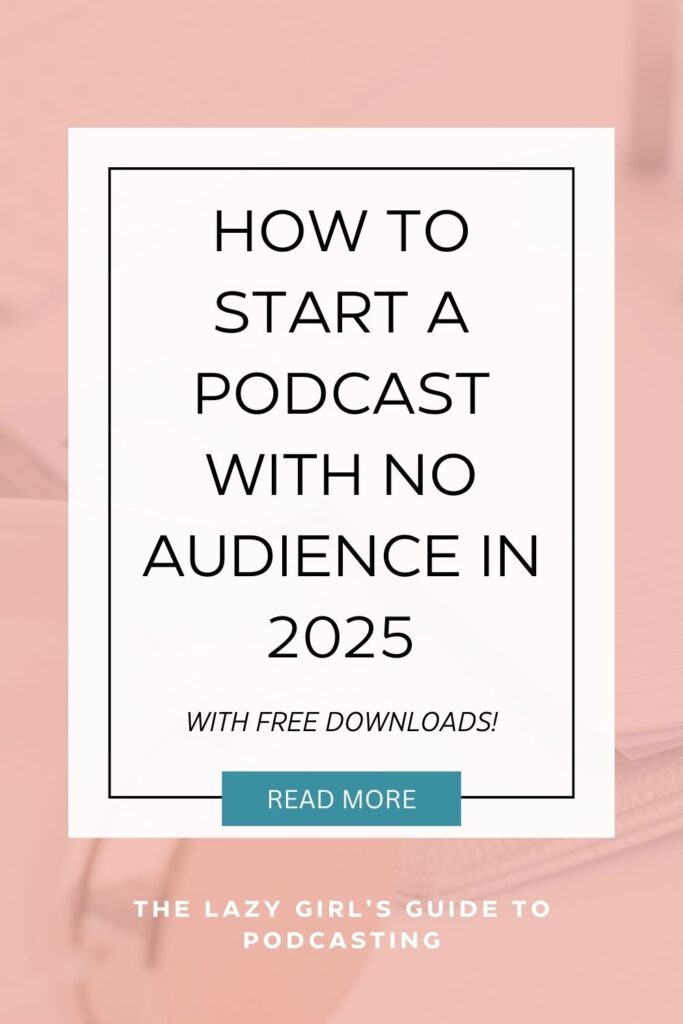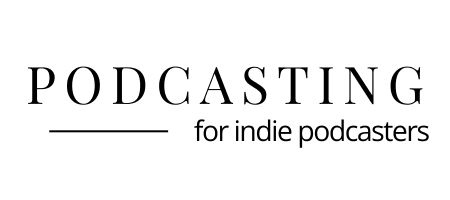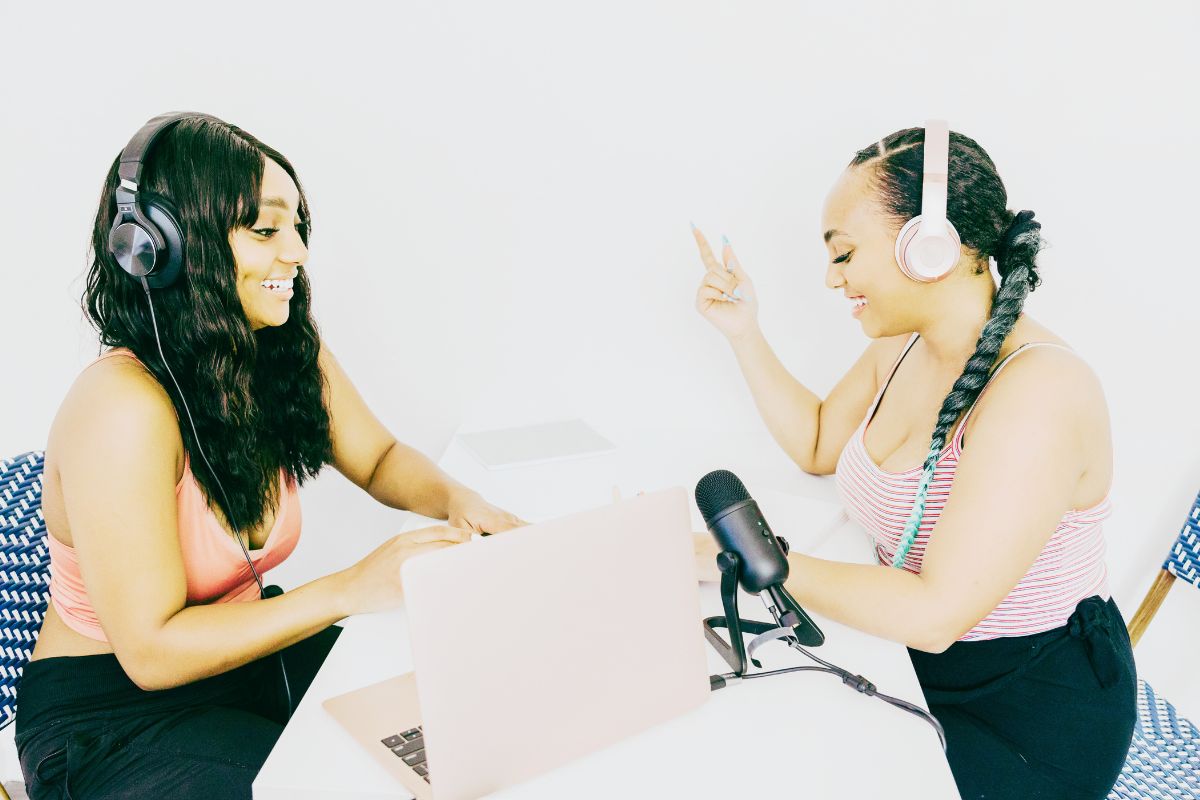
How to Start a Podcast with No Audience in 2025
So, you want to start a podcast?
That’s awesome!
Podcasting is still growing in popularity, and despite the rumours, there’s still plenty of space for new podcasts in 2025. But, if you’re brand new to podcasting, you’ve probably wondered the following question: how do I start a podcast with no audience?
Because, let’s face it, few podcasters start with a built-in audience waiting for their first episode to drop. So, in this blog post, I wanted to focus on this key topic: how to start a podcast with no audience. Let’s dive in:
Table of Contents
Who Should You Start a Podcast?
Before asking the question ‘how to podcast with no audience,’ we should probably take it back a few steps and think about podcasting as a whole.
Podcasting has exploded in popularity over the last decade, with what feels like millions of podcasts now available across every conceivable topic. But who exactly should consider launching their own show?
Here are a few types of people that can really benefit from starting a podcast:
Entrepreneurs and Business Owners
A podcast allows you to build your personal brand, share your expertise, and reach potential customers in a unique way.
By providing valuable and entertaining content through your show, you can attract a loyal audience of followers. You can then promote your products/services, make business announcements, and really connect with your audience in a more personal format than other marketing channels.
Subject Matter Experts and Thought Leaders
Do you have deep knowledge and experience in a particular field? A podcast is the perfect platform to share your insights, ideas, and stories with the world.
You can establish yourself as a go-to voice and build a reputation by offering high-quality, informative content tailored for your niche audience.
Coaches, Consultants, and Professionals
Similarly, if you provide coaching, consulting or other professional services, a podcast allows you to demonstrate your experience while providing advice and tips.
You’ll gain credibility and can potentially attract new clients by showcasing your expertise.
Hobbyists and Creatives
Have a passion project or creative pursuit you love? Why not share that with the world through an entertaining podcast? This is how The Lazy Girl’s Guide to Podcasting started – as a hobby and as a way of sharing my passion for podcasting with more people.
From sports analysis to home brewing, fiction writing to music production, you can indulge your interests while finding a community of like-minded listeners.
No matter what line of work you’re in, a podcast provides an incredible opportunity to share your voice and connect with an audience in a powerful way. With relatively low startup costs and the ability to record from anywhere, almost anyone can benefit from the exposure and platform a podcast provides. If building your brand, your audience, and your influence is important, it’s time to seriously consider hitting “record” on your own show.
Related blog post >> 4 Reasons Why Podcasting is a Must for Your Coaching Business
Related blog post >> 10 Free Podcasting Tools You Need to Try
How to Start a Podcast with No Audience: The Basics
When you start with creating a podcast, there can seem like a million different things to do. From podcast artwork to submitting to podcasting directories. The list just goes on and on.
So where do you start? And how do you start a podcast with no audience in 2025? Launching a successful podcast involves several key steps. From conceptualizing your show idea to recording and editing episodes to promoting your podcast – there’s a lot to consider.

Step 1: Settle on a Solid Concept
The first step for how to start a podcast with no audience is nailing down a clear concept for your show. After all, if you don’t have a clue what your podcast will be about, how will your target audience know what it’s about?
Consider to yourself:
- What will your podcast be about?
- Who is your target audience?
- What format and tone do you want your podcast to have?
Some tips on defining your podcast concept:
- Pick a topic you’re passionate about and have expertise in. This will make creating content much easier.
- Aim for a narrow niche or focused topic rather than too broad of a concept. Niche shows tend to attract more loyal, engaged audiences.
- Do some research on existing shows in your niche. Identify any gaps or opportunities to differentiate your concept.
- Decide on your show format and structure – will it be interview-based, a co-hosted discussion, a solo monologue format, or something else?
Once you have a clear podcast concept fleshed out, it’s time to give your show a name. Aim for something clear, catchy and memorable that represents your show concept well.
Related blog post >> How to Name Your Podcast in 2024
Related blog post >> Why Your Podcast Format Matters More Than You Think
Step 2: Invest in Some Basic Equipment
While you don’t need to go overboard on fancy gear, you will need some basic podcasting equipment to get started:
- Microphone – Look for a quality USB mic, condenser mic or digital recorder. The Shure SM58, Audio-Technica ATR2100 and Rode PodMic are good affordable options.
- Pop Filter – Helps block plosive sounds that cause distortion. Any basic pop filter will do, you don’t need anything fancy (for reference, my pop filter was a freebie!!).
- Microphone Stand – A small mic stand or boom arm to position your mic properly. Some mics come with a mini stand built in.
- Headphones – A good pair of headphones is crucial for high-quality audio monitoring.
You’ll also need audio editing software to polish and produce each episode. Popular free options are Quicktime and GarageBand. Paid options include Riverside.fm and Descript.
Related blog post >> How to Record Your Podcast Using a Microphone for iPhone
Related blog post >> The Best Budget-Friendly Podcast Microphone for Beginners
Step 3: Create Your Podcast Art and Setup Hosting
Podcast artwork is essential for the visual branding of your show. This single image will be displayed across all platforms where your show is listed.
Your artwork should be eye-catching, on-brand, and clearly communicate the name/topic of your show. Basic graphic design tools like Canva can help create professional podcast cover art without hiring a designer. Your artwork needs to be 3000 x 3000 px in order to comply with podcast artwork guidelines.
Next up, you’ll need to set up podcast hosting to upload and publish your episodes. A podcast host acts as an online home base for your show’s RSS feed, artwork, descriptions, and audio files.
Popular hosting options include Buzzsprout and Captivate.fm. Expect to pay $10-20 per month for a hosting plan with unlimited storage and bandwidth.

Related blog post >> 9 Essential Things to Do Before Starting a Podcast in 2024
Related blog post >> What is a Podcast?
Step 4: Record Your Trailer and Initial Episodes
Before you can officially launch, you’ll need to produce some content! Start by recording a 1-2 minute podcast “trailer.” Think of this as an appetizer to whet the appetite of potential listeners for your show.
Then, record anywhere from 2-5 initial full episodes to have ready at launch. Having that bank of content available helps hook new listeners from the start.
Remember, the quality of your audio is key. Follow best practices like using a microphone and minimizing background noise and room reverb. Take time to edit and polish each episode too.
Tips for getting best audio quality:
Here are some bullet point tips for achieving the best audio recording quality for your podcast:
- Invest in a good quality microphone – Look for USB mics, condensers, or digital recorders – and no, you don’t need to spend a fortune to get a good microphone!
- Add a pop filter to block plosive sounds that cause distortion.
- Record in a small, quiet room with minimal echoes/reverb and close windows/doors.
- Eliminate background noise by turning off fans, AC units, phone ringers etc.
- Optimize room acoustics with sound dampening panels or hanging blankets/towels.
- Wear headphones to better monitor your voice levels and eliminate bleed.
- Speak clearly and consistently 6-12 inches from the mic capsule.
- Do a test recording and listen back to check audio quality before each session.
- Use noise reduction and normalization tools during editing to polish the raw files.
- Record separate tracks for co-hosts/guests to allow more precise audio editing.
- Ensure consistent voice levels throughout without peaking or too much variance.
- Add minor compression and EQ in post to optimize voice tone and clarity.
Related blog post >> How to Write A Podcast Script: From Start to Finish
Related blog post >> Can I Swear On My Podcast?
Step 5: Submit Your Podcast to Directories
To get your show out there and available for listeners to subscribe to, you’ll need to submit it to all the major podcast directories and apps.
The biggest players are Apple Podcasts, Spotify, and Amazon Music. Most podcast hosts enable you to easily submit your show’s RSS feed to these directories with 1-click.
For Apple Podcasts specifically, you’ll be required to enter more detailed show info for their submission process. Make sure your artwork meets their 3000×3000 pixel minimum as well.
It can take anywhere from a few hours up to a few days for your show to get approved and appear live in each directory after submission.
Related blog post >> How to Get Your Podcast on Apple Podcasts (iTunes)
Related blog post >> How to Get Your Podcast on Spotify: A Beginner’s Guide
Related blog post >> Podcast Distribution: Why Your Podcast NEEDS to Be Everywhere
Step 6: Launch and Promote Your Podcast
With your trailer, initial episodes and directory submissions all set, you’re ready to launch! Set a firm release date for your trailer and first batch of episodes.
In the days and weeks leading up to launch, start actively promoting across your website and social channels. Let your personal/professional network know you have an exciting new podcast premiering.
Create sharable content like audiograms, short video teasers, and written previews to drum up excitement. Guest on other podcasts or get friendly influences to spread the word.
Also make sure to enable ratings/reviews and hit subscribe on all platforms. The more engagement and new subscribers you accumulate early on, the better chance your podcast has of getting featured and discovered.
Related blog post >> The New AI Tool for Podcasters: A Full Review of SummarAIze
Related blog post >> How to Use TikTok to Promote Your Podcast
Step 7: Create an Episode Release Schedule
Now that your show is live, you’ll need to create a production schedule for recording, editing and publishing future episodes consistently.
Map out a realistic, sustainable cadence that works for you – whether that’s weekly, bi-weekly, monthly or whatever.
Listeners crave consistency, so do your best to stick to this publishing schedule. Use tools like a content calendar to plan topics and stay organized.
Related blog post >> Finding the Sweet Spot: How Often to Release Your Podcast Episodes
Related blog post >> 10 Free Podcasting Tools You Need to Try
Step 8: Keep Promoting and Engaging Listeners
Promotion doesn’t stop once your podcast is launched! You’ll need to actively keep promoting your show and episodes on an ongoing basis.
Set up social accounts specifically for your podcast and engage with your growing community of listeners. Monitor ratings/reviews and respond to feedback.
Collaborations with other podcasts through guest spots and cross-promotions can help get your show discovered by new audiences. Attend or speak at relevant conferences and events.
You could also explore sponsorships and paid promotion tactics as your show’s audience grows over time.
Don’t forget about SEO and discoverability as well. Optimizing episode titles, descriptions and show notes to include relevant keywords can make your podcast more visible through searches.
Related blog post >> The No 1 WORST Way to Get More Podcast Listeners
Related blog post >> How to Have a Successful Podcast – Hint; It’s Not What You Think!
Final Thoughts for How to Start a Podcast with No Audience
Starting a podcast requires diligent work and commitment, but it’s an incredible way to build an engaged audience around your voice and expertise.
The key to podcasting success is consistently creating high-quality content that provides value to your listeners. Find your groove with editing, promotion and community engagement.
Stick with it, remain patient, and keep iterating on your format and strategy. In time, your podcast will gain momentum and turn into a true passion project you can be proud of.
So what are you waiting for? Start planning your new podcast today – the world needs to hear the message and insights you have to share!





